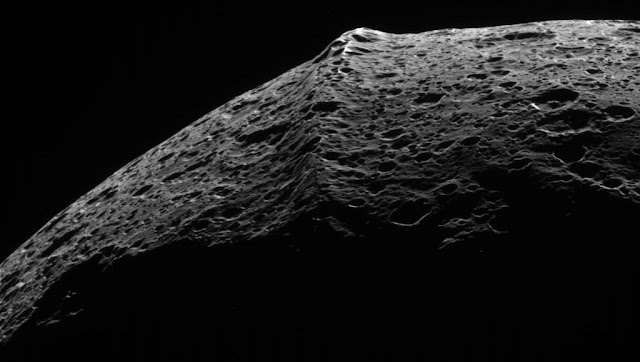Iapetus is a moon of
Saturn with a funny name and a funny geological feature. I always think of it
as the "dinosaur moon", because it has a distinct ridge feature on
its surface that reminds me of the back of a dinosaur. Orbiting at 2.2 million
miles from Saturn's surface, it's farther away from Saturn than Titan is. The
surface of Iapetus was imaged by the Cassini mission in 2004, and the images
revealed the equatorial ridge, a 6 mile high mountain range. It's a bit unclear
how this band of mountains ended up on Iapetus. One theory is that a long time
ago, Iapetus had a ring similar to Saturn's ring. As the moon evolved, the ring
began to collapse onto the surface, and this ridge is where all the material
collected. A second idea is that the ridge formed during a time when Iapetus
was spinning on its axis much faster than it does today. Bodies in space, such
as the Sun and the Earth, spin on their axis. Because of this, they bulge just
a little bit in the middle. So Earth and the Sun are not perfect spheres, but
rather balls that are slightly wider at the center. If Iapetus was spinning
really fast some time in the past, this ridge might be the result of the moon
bulging in in the middle. Astronomers will have to take a closer look at the composition
and orbital properties of this moon before they can determine exactly how the
ridge formed.
Image Credit:
NASA/JPL/Cassini
